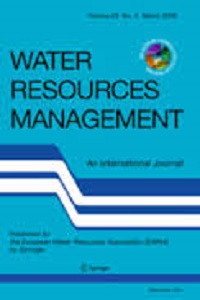A landscape planning and management tool for land and water resources management: an example application in northern Ethiopia
Land and water degradation due to on-site soil/nutrient loss and off-site pollution/sedimentation are serious environmental problems. Landscape planning and management tools are essential to implement best management practices targeted at locations where they are needed most. Although many soil/water-landscape studies have been published in the last 2 decades, progress in developing operational tools for supporting landscape planning to minimize land and water degradation in developing regions is still modest. Some of the existing tools are data demanding and/or complicated to be useful to data scarce regions. Some require detailed understanding of the hydrological and modelling processes and thus less applicable to local stakeholders involved in land use planning and management. A user-friendly LAndscape Planning and MAnagement Tool (LAPMAT) developed to facilitate land management decision-making. LAPMAT is a menu-oriented interactive graphical user interface that can aid decision makers identify hotspot areas of soil erosion and evaluate the effects of alternative land use management practices at a catchment scale. The modelling framework and its interfaces are designed to guide the user through a series of menus that: 1) allow input model parameters, adjusting coefficients, visualizing input parameters and executing the model; 2) enable changing land use and management practices and re-evaluating potential consequences; 3) allow viewing results in tabular, graphical or map form side-by-side; and 4) (re)-evaluating the respective impacts of management/conservation options. The framework has been applied to assess the severity of soil erosion and simulate the impact of different land management practices using the Revised Universal Soil Loss Equation (RUSLE) adjusted for sediment delivery ratio in an example catchment of northern Ethiopia. The results showed average sediment yield rate of 55 t ha−1 y−1. Conservation measures targeted at high soil loss areas and gullies gave the maximum reduction in sediment yield by about 80 %. Since LAPMAT allows users handle the selection of management/planning options and provide fast and responsive outputs, it can assist in effective multi-stakeholder negotiations over land-use planning where the minimization of land/water degradation is the ultimate goal.

